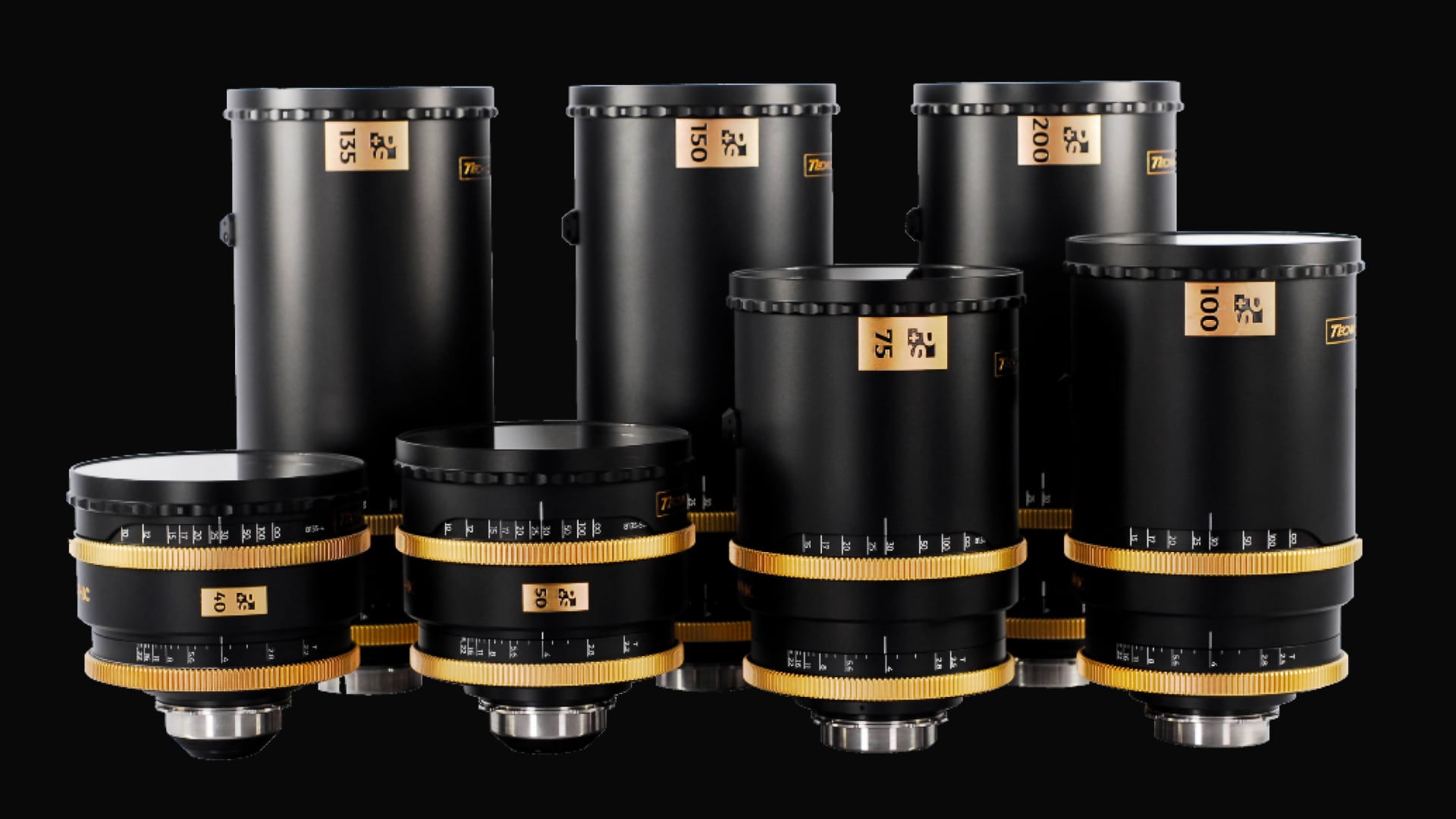
Some seriously nice and rather unique cinema glass is on offer in the shape of the new Technovision 1.5X AproXima anamorphic primes from P+S Technik.
A very well-known representative of a big lens manufacturer, who we’ll allow to remain anonymous, once said that anything other than 2:1 anamorphics weren’t worth building. Neither one thing nor the other, he said. Not enough anamorphic character to be worthwhile, he said. Since that time, the world has often taken a rather different view, and P&S Technik’s announcement of its Technovision AproXima range, with 1.5:1 compression, is the latest example.
The range includes four lenses, a 40mm T2.2, a 50mm T2.2, 75mm T2.5 and 100mm T2.5. The feature the company seems most proud of is that they all have large-format coverage but have close focus down to 1’7”, which is at least five inches closer than the Technovision 1.5:1 range even for the 40mm. OK, there are 135, 150 and 200mm lenses in the Technovision range, so the AproXima set is not a replacement, per se, but it’s certainly a lot more convenient.
Close focus can seem like a nicety until we try to fill the frame with small objects. The 50mm Technovision won’t focus any closer than 2’2”, which might leave someone reaching for the 75 to create a frame-filling closeup of a small subject – the clue in the whodunit, the big red fire button on the spaceship’s control console, and so on. The problem is, the 75 has an even longer minimum focus of 3’2”. This can create a circular situation where someone might want a certain frame, be unable to achieve it because of close focus problems, go to a longer lens and move back, and still not be able to get the desired result without reaching for a set of dioptres.
In any case, on a set of lenses which costs what these are likely to cost – they're available now but no price is given – we might reasonably demand all the conveniences. Naturally, we give something away in weight and bulk; full frame anamorphics are never going to be the sort of glass that greatly extends the flight time on drones. Cooke’s Anamorphic/i Full Frame Plus range is heavier; the 50mm T2.3 Cooke weighs in at 4kg while the 50mm AproXima is only 3.2, though they’re not directly comparable designs. Apart from the fact that Cooke likes 1.8:1 compression for its full frame range, it also promotes a “greater than full frame” image circle without actually specifying that circle’s diameter. It’s also a much larger range, particularly with an 85mm macro to solve the close focus issue.
Not just for lottery winners and oligarchs
Still, all of this does rather put the lie to the idea that anything less than a than 2:1 anamorphic is for parvenus, though be fair, that was a few years ago, before the popularity of large-format sensors. There’s a certain irony in the fact that larger-than-super35 sensors have often been used to simulate 35mm cameras, in pursuit of a classic anamorphic look on the basis that many so-called Super35 cameras have sensors that are the same width as historic film frames, but, with prominent exceptions, not the same height.
That’s long made 2:1 anamorphics less useful, at least without outrageous amounts of cropping, and lenses with lower compression factors have generally been intended to bring entertaining anamorphic optical effects to wider digital sensors. This is probably no exception; it’s just aimed at rather bigger sensors on rather higher-end productions. P&S’s new range presumably won’t be cheap, and existence of things like Venus Optics’ Laowa Nanomorph crowdfunding project demonstrates that it is – assuming the company delivers – quite possible to make fairly affordable, very small and very lightweight 1.5:1 anamorphic glass, albeit with what the company calls “Super35+” coverage (we’d usually shy away from mentioning a crowdfunding project, but the Nanomorphs are long since funded – though you can still go and put some money down if you’d like to).
Choice is a fine thing, and the ability of cameras, monitors and post software to handle arbitrary anamorphic compression factors is one of the benefits of modern film and TV production work. If there’s any real surprise here it’s the constant, seemingly unending appetite of the world for high-end cinema glass. It’s often been said that this must have a limit, but if it does, we’ve apparently not yet found it.
Tags: Production


Comments